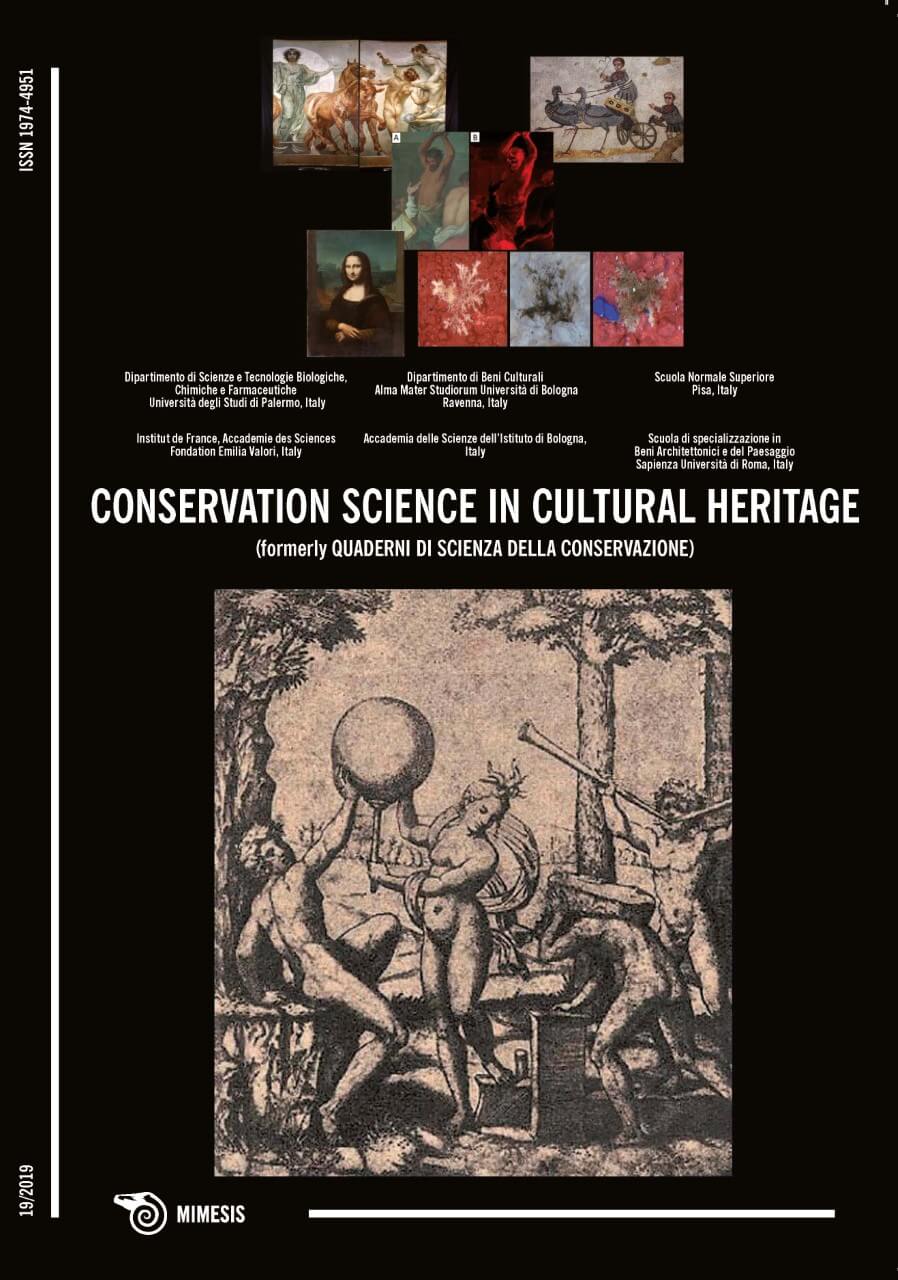Biotechnology in the Conservation Field: Removal of Sulphates Using Bacteria and Bioconsolidation of Paintings and Stuccos
DOI:
https://doi.org/10.6092/issn.1973-9494/10348Keywords:
bioconsolidation, biocleaning, bacteria, stucco, frescoAbstract
The aim of this study was to explore the use of biotechnologies in the restoration of wall paintings and stuccos which often show a great complexity regarding constitutive materials and conservative conditions. ‘Biological methods’ were compared to traditional methods, focusing on restoring the cohesion of the superficial layers (bioconsolidation) and the removal of sulphates (biocleaning) often found on the frescoes as decay products. The experimentation took place as part of a graduate thesis and was divided in two stages: the first was spent in the laboratory working on samples of painted plaster and the second was spent in situ, on the frescoes and stuccos in the Church of Santa Pudenziana in Rome, Italy. Application of the products was followed by a campaign of investigations aimed at determining the efficacy, and the advantages and disadvantages of these methods compared to conventional ones.Downloads
Published
2020-03-18
How to Cite
Panella, E., Giovannone, C., Bartolini, M., & Fondi, V. (2019). Biotechnology in the Conservation Field: Removal of Sulphates Using Bacteria and Bioconsolidation of Paintings and Stuccos. Conservation Science in Cultural Heritage, 19(1), 157–175. https://doi.org/10.6092/issn.1973-9494/10348
Issue
Section
Articles
License
Copyright (c) 2019 Eleonora Panella, Carla Giovannone, Marco Bartolini, Veronica Fondi
Copyrights and publishing rights of all the texts on this journal belong to the respective authors without restrictions. Authors grant the journal right of first publication.
This journal is licensed under a Creative Commons Attribution 4.0 International License (full legal code).
See also our Open Access Policy.






